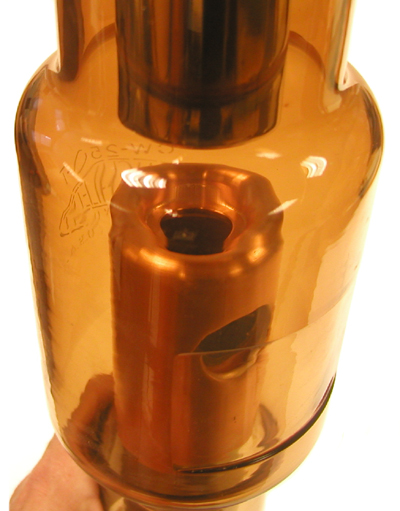Machlett CW-250-T Tube (ca. 1940s)

This would appear to be an oil-cooled hooded anode tube designed for therapeutic use (the "T" in the model number probably stands for "therapy"). The openings in the extension at the left end of the tube in above photograph were probably there to permit a circulation of oil within the hollow anode.
The cathode employs a large filament which would have produced a rather big focal spot. The target (anode) is surrounded by a copper hood that has a small circular window (facing up in the top photo and towards the lower right in the photo to the right) probably made of beryllium.

Electrons from the cathode would go through the opening in the end of the copper hood, the opening is seen facing up in the photo to the right, and strike the target (not visible). The resulting X-rays would exit towards the lower right in the photo through the beryllium window.
Note how the glass envelope has been ground thinner in front of the beryllium window in order to reduce the attenuation of any low energy X-rays.
Why use a hooded anode
Some of the electrons emitted by the cathode "bounce" off the target. Since there is no other component of the tube with a positive charge for them to go to, the electrons head back to the target. When they do, they are likely to strike the body and stem of the anode rather than the focal spot. As such, X-rays are emitted from a broader area of the anode than is desirable. The hood reduces this problem. It does so by intercepting the electrons that bounce off the anode's target. When these electrons strike the inside of the copper hood they do produce X-rays, but the energies and intensities are low. So low that almost none penetrate the hood and cause a problem.
Size: ca. 20" long, 4" maximum diameter
I haven't located any specific references to the CW-250-T tube. As such, some of the above is speculative.
